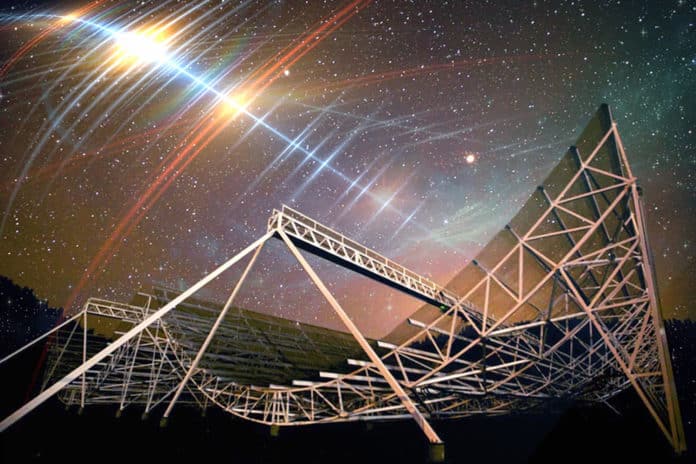Astronomers at MIT and universities across Canada and the United States have detected a strange and persistent radio signal from a distant galaxy located a billion light-years from Earth. Surprisingly, this radio signal, designated as fast radio burst, or FRB, appears to be flashing with surprising regularity.
This new signal persists for up to three seconds, about 1,000 times longer than the average FRB. It is labeled as FRB 20191221A- the longest-lasting FRB with the clearest periodic pattern detected to date.
In a far-off galaxy, the signal’s source is several billion light-years away from Earth. Astronomers believe the signal may have come from either a radio pulsar or a magnetar, two different forms of neutron stars that are incredibly compact and fast spinning collapsed cores of big stars. However, the precise nature of that source is yet unknown.
Daniele Michilli, a postdoc at MIT‘s Kavli Institute for Astrophysics and Space Research, said, “There are not many things in the universe that emit strictly periodic signals. We know of radio pulsars and magnetars in our galaxy, which rotates and produce a beamed emission similar to a lighthouse. And we think this new signal could be a magnetar or pulsar on steroids.”
The signal was initially detected on Dec. 21, 2019, by CHIME. This gathered the attention of astronomers.
Michilli recalled, “It was unusual. Not only was it long, lasting about three seconds, but there were periodic peaks that were remarkably precise, emitting every fraction of a second — boom, boom, boom — like a heartbeat. This is the first time the signal itself is periodic.”
While analyzing the pattern of FRB 20191221A’s radio bursts, Michilli and his colleagues found similarities with emissions from radio pulsars and magnetars in our galaxy. The main difference is the new signal appears to be more than a million times brighter.
Michilli says, “the luminous flashes may originate from a distant radio pulsar or magnetar that is normally less bright as it rotates and for some unknown reason ejected a train of brilliant bursts, in a rare three-second window that CHIME was luckily positioned to catch.”
“CHIME has now detected many FRBs with different properties. Some live inside very turbulent clouds, while others look like they’re in clean environments. From the properties of this new signal, we can say that around this source, there’s a cloud of plasma that must be extremely turbulent.”
The astronomers hope to catch additional bursts from the periodic FRB 20191221A, which can help refine their general understanding of its source and neutron stars.
Journal Reference:
- The CHIME/FRB Collaboration., Andersen, B.C., Bandura, K., et al. Sub-second periodicity in a fast radio burst. Nature 607, 256–259 (2022).DOI: 10.1038/s41586-022-04841-8
